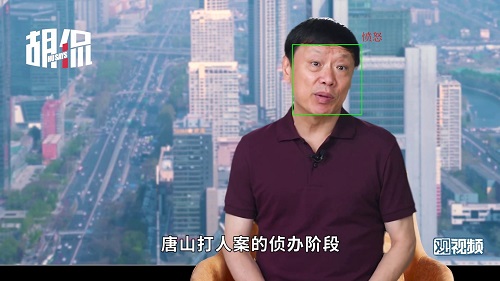- 系统环境配置。于PVER-master/config路径下进行如下操作
- 新建conda环境, python版本为3.7
- 使用pip命令分别安装torch2.x、tensorflow1.x、keras2.x、moviepy、cv2、transformers进行基础环境配置,可直接在PVER-master路径下打开命令行执行如下代码
# 由于conda以及pypi官方镜像现在不对python3.6以后的版本提供Dlib安装源,因此需要分两次安装环境
pip install -r requirements.txt- 安装该路径下的visual sutdio社区版, 勾选python开发以及C++桌面开发(这一步是为了提供Dlib安装基础)
- 安装该路径下的CMake
- 使用pip在虚拟环境下安装CMake以及Boost
pip install CMake
pip install Boost- 安装该路径下的dlib-19.22.99-cp37-cp37m-win_amd64.whl
# 一定要在PVER-master/config路径下打开命令行,否则使用绝对路径进行安装
pip install dlib-19.22.99-cp37-cp37m-win_amd64.whl- 安装人脸识别模块
pip install face_recognition- 安装音频识别模块
pip install librosa- 打开PVER-master路径下的main.py, 这是项目的入口.
- 将以mp4结尾的音视频文件存放在./Repo/video/mp4文件夹下
- 在main函数中进行如下设定,并在video2data函数中根据注释设置对应的参数,开始进行音视频分离以及视频帧抽取任务
video_tag = True- 在main函数中进行如下设定, 开始对被抽取的视频帧及音频进行情绪识别任务
video_tag = False待补充
- 基本环境配置与上一节中基于面部表情的情绪识别一致
- 额外需要安装的部分
pip install transformers, speechbrain打开PER/new/teset.ipynb 运行其中的cell即可。
算法调用预训练模型,识别输入的语音信号中存在的情感。并将结果输出。

@misc{speechbrain,
title={{SpeechBrain}: A General-Purpose Speech Toolkit},
author={Mirco Ravanelli and Titouan Parcollet and Peter Plantinga and Aku Rouhe and Samuele Cornell and Loren Lugosch and Cem Subakan and Nauman Dawalatabad and Abdelwahab Heba and Jianyuan Zhong and Ju-Chieh Chou and Sung-Lin Yeh and Szu-Wei Fu and Chien-Feng Liao and Elena Rastorgueva and François Grondin and William Aris and Hwidong Na and Yan Gao and Renato De Mori and Yoshua Bengio},
year={2021},
eprint={2106.04624},
archivePrefix={arXiv},
primaryClass={eess.AS},
note={arXiv:2106.04624}
}
- 在python3.6+环境下使用pip命令安装torch1.x,numpy,math,matplotlib,linecache,jieba进行基础环境配置。
- 将数据文件放到data文件夹下。
- 更改data_nyt.py中的data_file变量,将其改为自己的文件路径。
- 更改main.py文件中的文件路径。
- 运行main.py文件
python main.py --mode train --train_embeddings 1 --epochs 1000
We use PyG (PyTorch Geometric) for the GNN component in our architecture. RGCNConv and TransformerConv
使用 comet 记录所有实验,并使用其贝叶斯优化器调整超参数。
对于文本特征,我们使用 SBERT。
python3.7版本及以上
Pytorch如果安装GPU版本,cuda版本需要11.7及以上
pip install comet_ml --upgrade #使用默认的 Python,comet_ml升级到最新版本
pip install torch_geometric(如果报错可卸载最新版本,使用2.1.0版本)
pip install -U sentence-transformers
数据集:iemocap_4
对数据集进行处理,运行
python preprocess.py --dataset="iemocap_4"
python train.py --dataset="iemocap_4" --modalities="atv" --from_begin --epochs=55
python eval.py --dataset="iemocap_4" --modalities="atv"
Paper: https://arxiv.org/abs/2205.02455
https://github.com/Exploration-Lab/COGMEN
-
仅支持 python3
-
自动安装 pkuseg 依赖包
-
python3 only supported
-
Automatic installation of pkuseg dependency package
-
JioNLP 同样支持短语抽取,工具包安装方法:
$ pip install jionlp
- 输入必须为 utf-8 编码字符串
- 具体函数参数见代码
- Input must be utf-8 encoding string
- Check code for specific function parameters
import ckpe
ckpe_obj = ckpe.ckpe()
# 初次导入时会自动下载北大词性标注模型包,自动加载入内存(50M)
# 若由于网速原因下载失败,请参考 https://github.com/lancopku/pkuseg-python 如何安装下载 pkuseg 默认模型
# Speech Tagging Model Package of pkyseg will be downloaded automatically upon initial import
# If downloading fails due to network speed, please refer to how to install and download pkuseg default model in https://github.com/lancopku/pkuseg-python
text = '法国媒体最新披露,巴黎圣母院火灾当晚,第一次消防警报响起时,负责查验的保安找错了位置,因而可能贻误了救火的最佳时机。...'
key_phrases = ckpe_obj.extract_keyphrase(text)
print(key_phrases)
print(ckpe_obj.extract_keyphrase.__doc__)
- JioNLP 工具包调用方法:
>>> import jionlp as jio
>>> text = '朝鲜确认金正恩出访俄罗斯 将与普京举行会谈...'
>>> key_phrases = jio.keyphrase.extract_keyphrase(text)
>>> print(key_phrases)
>>> print(jio.keyphrase.extract_keyphrase.__doc__)
# ['俄罗斯克里姆林宫', '邀请金正恩访俄', '举行会谈',
# '朝方转交普京', '最高司令官金正恩']
text = '聚氯乙烯树脂、塑料制品、切割工具、人造革、人造金刚石、农药(不含危险化学品)、针纺织品自产自销。...'
word_dict = {'聚氯乙烯': 1, '塑料': 1, '切割': 1, '金刚石': 1} # 词汇: 词频(词频若未知可全设 1)
key_phrases = ckpe_obj.extract_keyphrase(text, top_k=-1, specified_words=word_dict)
print(key_phrases)
text = '国务院下发通知,山西省法院、陕西省检察院、四川省法院、成都市教育局。...'
word_dict = {'局': 1, '国务院': 1, '检察院': 1, '法院': 1}
key_phrases = ckpe_obj.extract_keyphrase(text, top_k=-1, specified_words=word_dict,
remove_phrases_list=['麻将局'])
print(key_phrases)
- 工具包中默认的主题模型参数由100万篇各个类型的新闻文本,以及少部分社交媒体文本训练得到。
- 若需要针对特定领域文本处理,则需要根据特定的语料重新训练模型,并按相应的文件格式做替换。
- 主题模型采用标准的 LDA 模型训练得到,工具包可选择 gensim、sklearn、familia 等,训练完毕后可以得到主题词的分布表示,进而可以得到每个词汇在不同主题下的分布。由此可以得出词汇的主题突出度。
- 首先基于 pkuseg 工具做分词和词性标注,再使用 tfidf 计算文本的关键词权重,
- 关键词提取算法找出碎片化的关键词,然后再根据相邻关键碎片词进行融合,重新计算权重,去除相似词汇。得到的融合的多个关键碎片即为关键短语。
- 短语的 token 长度不超过 12
- 短语中不可出现超过1个虚词
- 短语的两端 token 不可是虚词和停用词
- 短语中停用词数量不可以超过规定个数
- 短语重复度计算 MMR 添加其中
- 提供仅抽取名词短语功能
- 使用预训练好的 LDA 模型,计算文本的主题概率分布,以及每一个候选短语的主题概率分布,得到最终权重
- Firstly do word segmentation and part of speech tagging based on pkuseg tool, then use word level tfidf to calculate the keyword weight of the text.
- Fuse the adjacent key fragment words, recalculates the weights, and removes the similar words. The fused key fragments are candidate keyphrases. Rules include:
- Token length of phrase can not exceed 20
- There cannot be more than one function word in a phrase
- The token at both ends of the phrase should not be the function word and stop words
- The number of stopwords in a phrase cannot exceed the specified number
- Phrase repetition calculation is added
- Provide only noun phrases extraction parameters
- Calculating the topic probability distribution of the text and the topic probability distribution of each candidate phrase by using the pre-trained LDA model to obtain the final weight
python>=3.7
pip install -r requirements.txt该算法实现从非结构化文本中抽取实体和关系,并将其组成三元组,构建知识图谱。
执行算法
python3 demo_test.py --sens "2022年6月10日2时40分许,陈继志到正在店内用餐的被害人王某某、李某、远某、刘某某桌旁,对王某某实施*扰,遭拒后,陈继志殴打王某某,王某某与李某进行反抗。"
执行过程和结果
- Teneva N , Cheng W . Salience Rank: Efficient Keyphrase Extraction with Topic Modeling[C]// Proceedings of the 55th Annual Meeting of the Association for Computational Linguistics (Volume 2: Short Papers). 2017.
- Liu Z , Huang W , Zheng Y , et al. Automatic Keyphrase Extraction via Topic Decomposition[C]// Proceedings of the 2010 Conference on Empirical Methods in Natural Language Processing, EMNLP 2010, 9-11 October 2010, MIT Stata Center, Massachusetts, USA, A meeting of SIGDAT, a Special Interest Group of the ACL. Association for Computational Linguistics, 2010.
- https://github.com/dongrixinyu/chinese_keyphrase_extractor/tree/master



